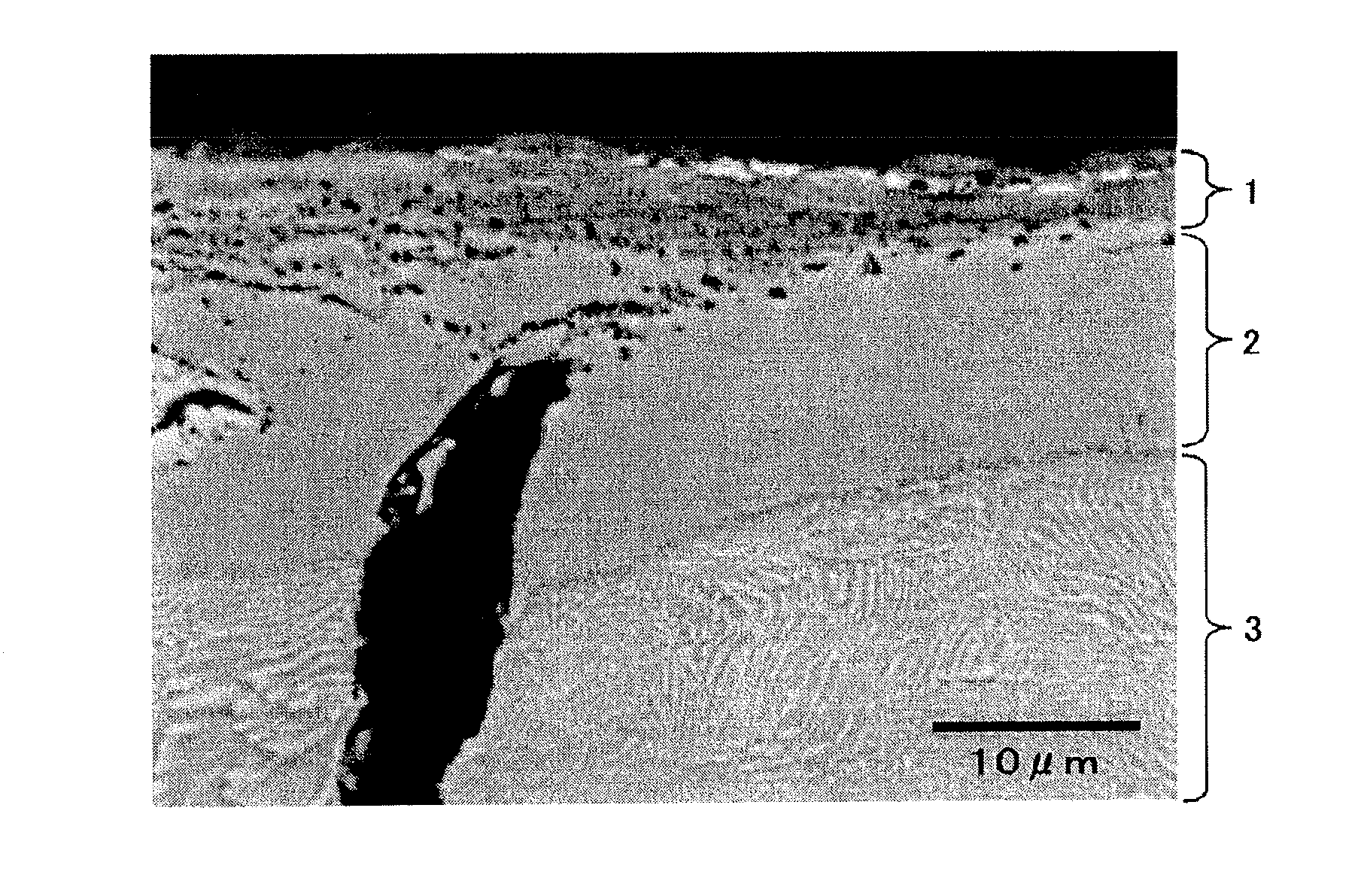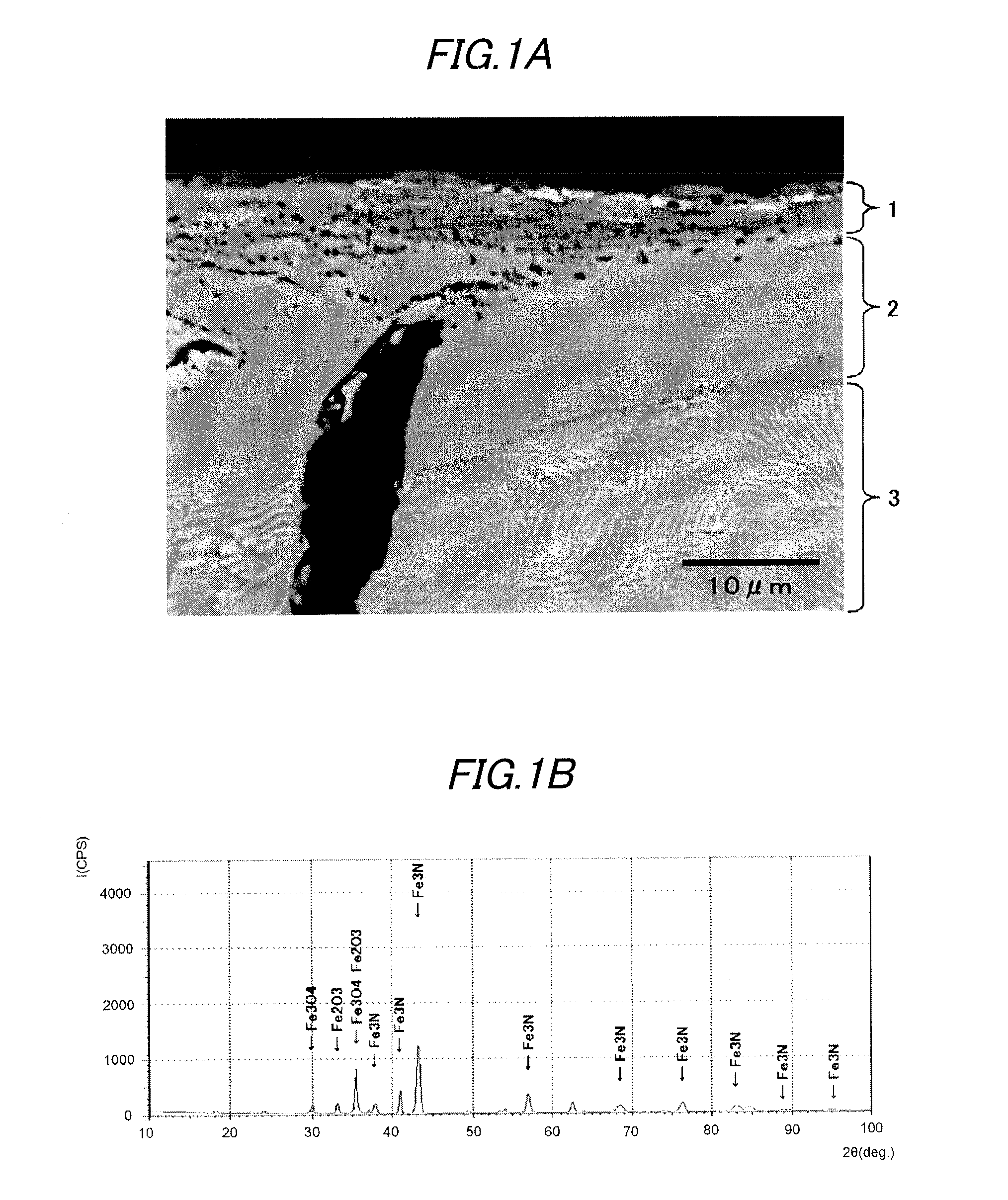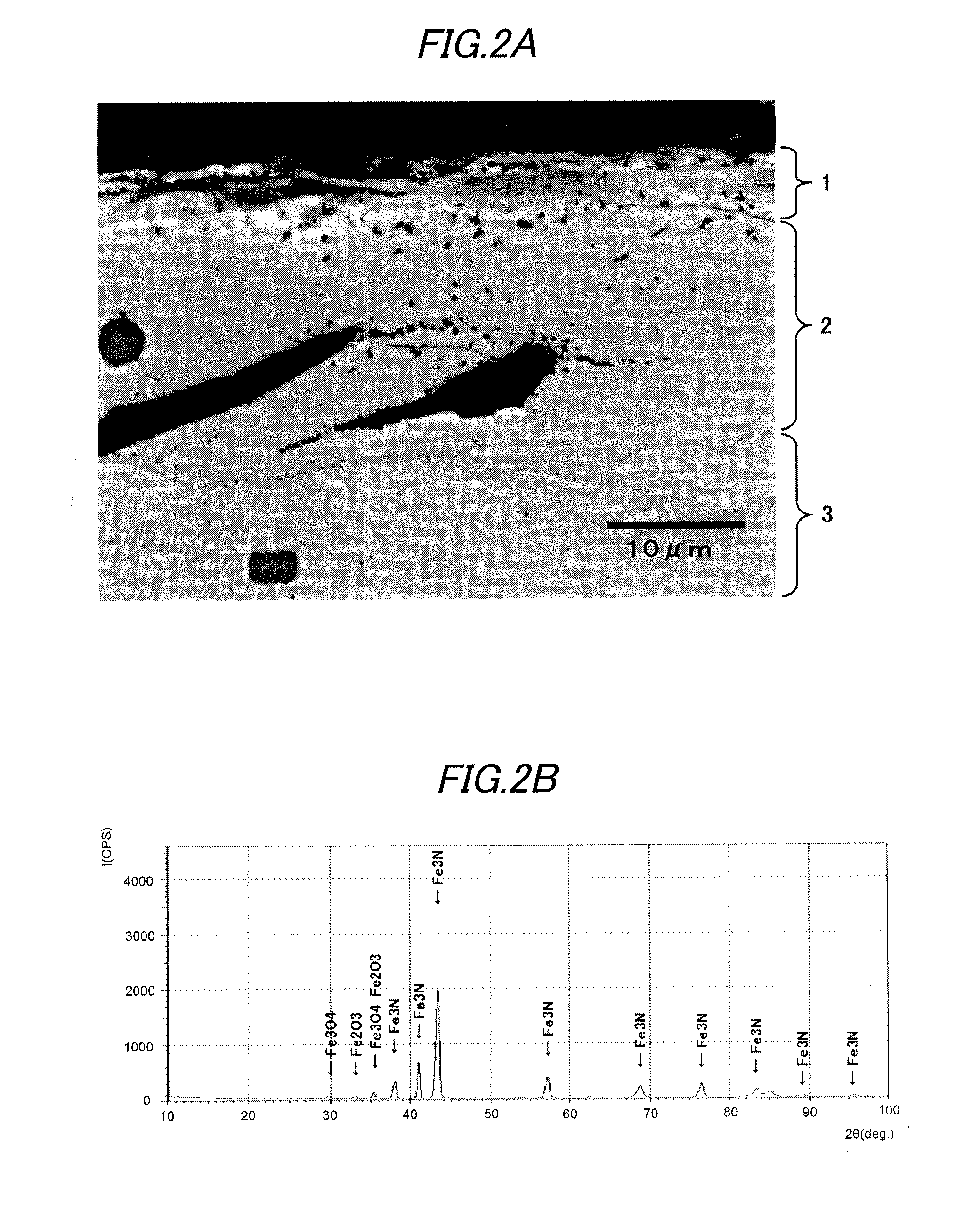Vehicular disc brake rotor and manufacturing method of vehicular disc brake rotor
a technology of cast iron and brake rotor, which is applied in the direction of brake discs, solid-state diffusion coatings, mechanical devices, etc., can solve the problems of difficult to secure sufficient salt-bath nitrocarburizing treatment has a problem in terms of safety and environmental load, and the outermost surface of the compound layer is prone to porous layer, etc., to achieve excellent corrosion resistance and wear resistance and friction characteristics, and prevent rust. , the effect o
- Summary
- Abstract
- Description
- Claims
- Application Information
AI Technical Summary
Benefits of technology
Problems solved by technology
Method used
Image
Examples
example 1
[0074]The cast-iron material (equivalent to FC200) was used as the material to cast a vehicular disc brake rotor having a diameter of 355 mm and a thickness of 32 mm and unnecessary parts (sprue, burr and the like) were removed. Then, the obtained vehicular disc brake rotor was subject to the heating treatment at 680° C. Then, a surface of the vehicular disc brake rotor was subject to the cutting work and was degreased by an alcohol-based cleaning agent.
[0075]After that, the vehicular disc brake rotor was put into a gas nitrocarburizing furnace (Fujikoshi Corp., EQ-6S type) and the nitrocarburizing treatment was then performed in which the treatment temperature was set to be 570° C. (controlling range: 565° C. to 575° C.) and the holding time at the treatment temperature was set to be 100 minutes (controlling range: 95 minutes to 105 minutes). At this time, ammonia of 5.0 m3 / h (controlling range: 4.5 m3 / h to 5.5 m3 / h) was used as the nitrogen supply source and methanol of 0.05 L / h (...
example 2
[0081]A vehicular disc brake rotor was obtained by the same method as the example 1, except that the rotor was taken out from the furnace and thus exposed to the atmosphere when the atmosphere temperature became 400° C. after the nitrocarburizing treatment. Like the example 1, the SEM observation, the X-ray diffraction analysis and the thickness measurement of the respective layers were performed for the vehicular disc brake rotor. As a result, it was confirmed that a nitrogen compound layer 2 having a thickness of 15 μm was formed on a nitrogen diffusion layer 3 having a thickness of 150 μm and a uniform and compact iron oxide layer 1 having Fe3O4 as a main component and having a thickness of 4 μm was formed on the nitrogen compound layer 2. The results are shown in FIGS. 2A and 2B.
[0082]After that, like the example 1, the surface images and binarization-processed images of the vehicular disc brake rotor were obtained and the pore area ratio (an average value of 25 views) of the su...
example 3
[0084]A vehicular disc brake rotor was obtained by the same method as the example 1, except that the rotor was taken out from the furnace and thus exposed to the atmosphere when the atmosphere temperature became 480° C. after the nitrocarburizing treatment. Like the example 1, the SEM observation, the X-ray diffraction analysis and the thickness measurement of the respective layers were performed for the vehicular disc brake rotor. As a result, it was confirmed that a nitrogen compound layer 2 having a thickness of 15 μm was formed on a nitrogen diffusion layer 3 having a thickness of 150 μm and a uniform and compact iron oxide layer 1 having Fe3O4 as a main component and having a thickness of 4 μm was formed on the nitrogen compound layer 2. The results are shown in FIGS. 3A and 3B.
[0085]After that, like the example 1, the surface images and binarization-processed images of the vehicular disc brake rotor were obtained and the pore area ratio (an average value of 25 views) of the su...
PUM
| Property | Measurement | Unit |
|---|---|---|
| temperature | aaaaa | aaaaa |
| frictional coefficient | aaaaa | aaaaa |
| thickness | aaaaa | aaaaa |
Abstract
Description
Claims
Application Information
 Login to View More
Login to View More - R&D
- Intellectual Property
- Life Sciences
- Materials
- Tech Scout
- Unparalleled Data Quality
- Higher Quality Content
- 60% Fewer Hallucinations
Browse by: Latest US Patents, China's latest patents, Technical Efficacy Thesaurus, Application Domain, Technology Topic, Popular Technical Reports.
© 2025 PatSnap. All rights reserved.Legal|Privacy policy|Modern Slavery Act Transparency Statement|Sitemap|About US| Contact US: help@patsnap.com



